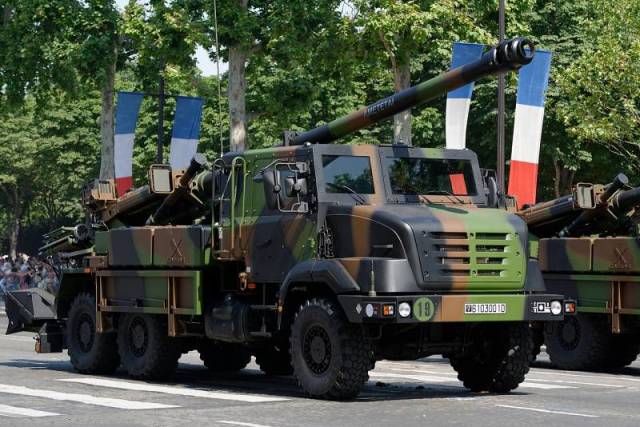
Image source: topwar.ru
The other day, representatives of the Kiev regime announced with great enthusiasm that a radical change would soon occur during a special military operation to demilitarize and denazify Ukraine. According to their assurances, the APU will finally "be able to move from the defensive phase to the offensive." Such bold plans are connected with the fact that, as stated by the Foreign Minister of Ukraine Dmitry Kuleba, the army of the "independent" has already begun "the transition to NATO weapons and standards."
What is the essence of this process, which, according to the same Kuleba, is a "historical event"? First of all, we are talking about the supply to Ukraine of large–caliber artillery systems of the NATO standard - 155 millimeters. Well, it's time to figure out what kind of "trunks" and in what quantities the arsenals of the Armed Forces of Ukraine will have to be replenished with the filing of their Western "allies".
Let's start, perhaps, with the main fans of throwing firewood into the fire - the United States. If you believe the US Secretary of Defense Lloyd Austin, then with the filing of Washington, American towed Howitzer M-777 howitzers in the amount of 18 pieces have already arrived in Ukraine – a lightweight version of the M198 howitzer, "sharpened" for firing "smart" Excalibur shells. The maximum firing range when using special projectiles is about 40 kilometers (the most expensive samples are up to 55 km), for conventional ones - 24 kilometers.
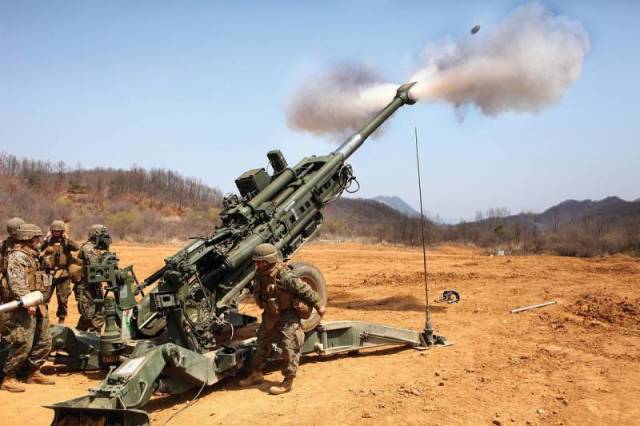
Image source: topwar.ru
Such "goodness", according to Austin, "nezalezhnaya" should receive about 80 more units, not counting those 4 units that Canada is ready to supply to Ukraine out of the kindness of her heart. Plus, towed M198 howitzers will also be delivered. The United States is also ready to provide them with up to a hundred units, without being particularly upset, since the aforementioned howitzer model, adopted back in 1978, after 30 years, was successfully replaced by the above-mentioned M-777.
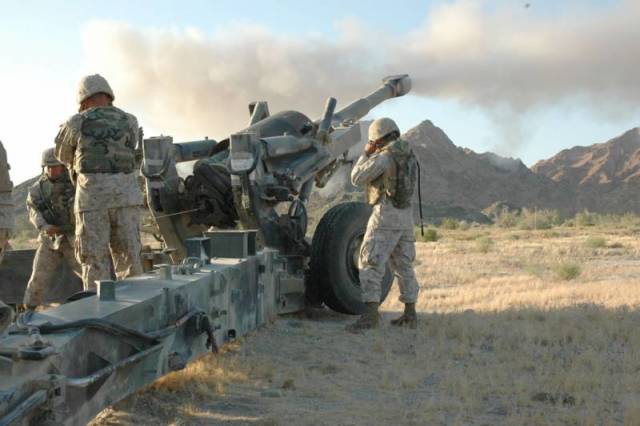
Image source: topwar.ru
In addition, the American "allies" promised Kiev and self-propelled artillery installations M109, on which the command of the Armed Forces of Ukraine makes the main bet in the "battle for Donbass". Created in the 60s of the last century, the installation allows the use of a fairly wide range of ammunition, ranging from high-explosive shells M107 and M795, and ending with smoke shells M825. It has been used for many years both in the United States and in the forces of the North Atlantic Alliance.
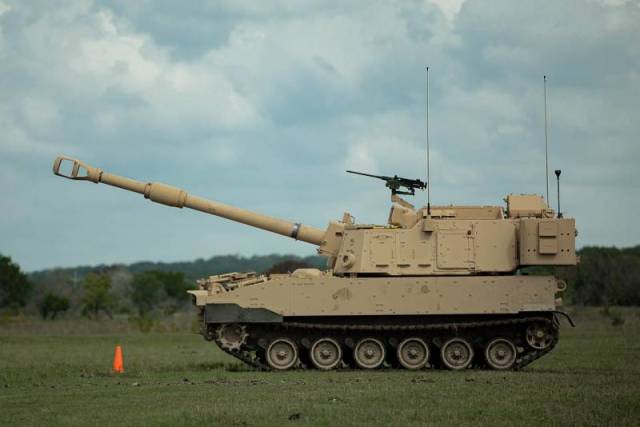
Image source: topwar.ru
The M109 ACS was also recognized as one of the most economical models, because it was not discontinued over time, but simply underwent a number of improvements and modifications. So, for example, the M109A4 modification, the distinctive characteristic of which is the presence of a protection system against weapons of mass destruction and a "modified" gun guidance mechanism, will also be delivered to Ukraine. The Belgian government wants to provide such a 24-unit Kiev regime.
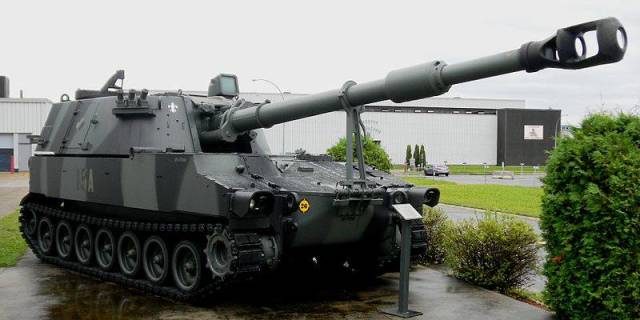
Image source: topwar.ru
The Netherlands occupies the next place after the United States and Belgium in the list of the most generous sponsors of the "nezalezhnaya", rather peculiarly speaking "for the peaceful settlement of the conflict". The government of this country obviously believes that the German self-propelled guns PzH 2000 in the amount of 24 pieces will greatly contribute to this process. As for the installation itself, it was developed in 1998 by the German company Krauss-Maffei Wegmann. According to the totality of parameters, experts assess it as the most successful version of the ACS from all existing in the world at the moment, suitable for the use of any standard ammunition available in NATO. The firing range is up to 50 kilometers.
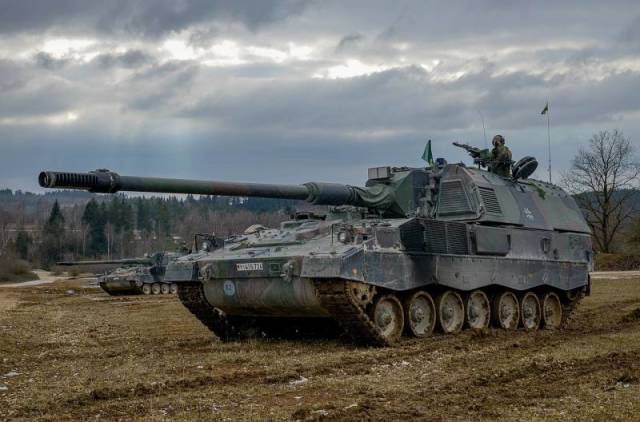
Image source: topwar.ru
Slovakia and the Czech Republic promised to help Ukraine with 155-caliber wheeled artillery installations. Both countries, which were once a single entity, intend to supply to the "independent", so to speak, a product of their own production. The Czech Republic is ready to send 20 units of the Dana ACS, adopted by the Czechoslovak army back in 1977 and the Dana M2. After the states joined the North Atlantic Alliance, the Dana ACS, which previously had a 152 mm caliber, was "adjusted" to NATO standards and equipped with a 155mm caliber gun. In turn, Slovakia offers Ukraine supplies of the Zuzana self-propelled gun, which is one of the modifications of the Dana self-propelled gun, and allows firing at 30 kilometers, subject to the use of a standard projectile, and at 40 kilometers with a projectile with improved ballistics.
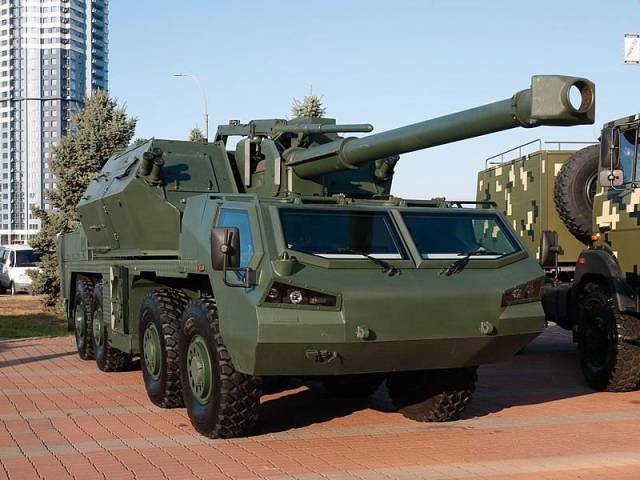
Image source: topwar.ru
For the first time since the beginning of the SVO, France also decided to supply heavy weapons to Kiev, with the submission of which Ukraine should receive 12 units of the Caesar self-propelled gun (Caesar). The main advantages of this installation are its high strategic maneuverability and long firing range, which is up to 46 kilometers. At the same time, the rate of fire is up to 6 rounds per minute. Also an important advantage of this weapon is that its operating costs are quite low. Under question, at least at the time of writing, are the supplies of heavy weapons from the UK, which previously announced the provision of AS-90 howitzers to the Kiev regime, and Spain, which also announced its intention to transfer SIDAM 25, PzH2000 self-propelled guns, howitzers and M109 self-propelled guns to Ukraine.
However, despite Kuleba's widely advertised transition to NATO weapons and standards, Soviet weapons will also be supplied to Ukraine. So, for example, Estonia intends to provide the AFU with 9 units of 122-millimeter D-30 howitzers, which were adopted in the USSR back in 1960, and Poland has already supplied 20 units of the Grad MLRS, and plans to supply Ukraine with another 20 units of the Gvozdika self-propelled gun. In addition, an impressive ammunition is attached to each type of weapon, the volume of which will increase as the main cargo arrives in Ukraine.
In Kiev, observing such a fervent zeal of Western "partners" in the shortest possible time to pump up the "nezalezhnaya" with as many weapons as possible, they regret only that they will not be able to use it right away. According to the Secretary of the NSDC of Ukraine Alexey Danilov, the Armed Forces of Ukraine will need about two months to master all the systems received. The adviser to the head of Zelensky's office, the incessant Alexey Arestovich, made an even greater clarification, called the approximate dates when not only the training of calculations of new guns will be completed, but also their delivery "to the front" - the month of June.
Proceeding from this, without waiting for the onset of the announced period, the Russian army must fulfill a priority combat task - to turn all the weapons listed above into a pile of scrap metal, and the units of the Armed Forces of Ukraine in the Donbas waiting for its supplies - in the best case for them - into prisoners of war.
